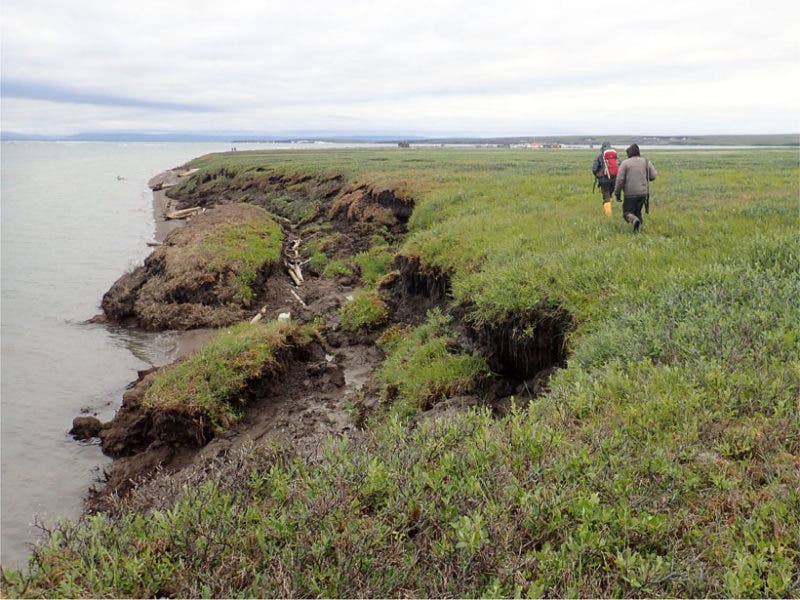
The Arctic is warming faster than almost anywhere else on Earth. As a result, the region is changing rapidly: Glaciers are melting, sea ice is disappearing, and permafrost is thawing, which could accelerate climate change. The northern permafrost region covers roughly a quarter of the land in the Northern Hemisphere and stores vast amounts of carbon—more than double the amount in the atmosphere today—much of it still locked away, frozen. Researchers have known for some time that permafrost could become a major source of greenhouse gases as the soil thaws and once-dormant microbes wake up and break down organic matter.
This thaw is accelerated in places along Arctic coasts, where permafrost is eroding into the sea. As sea ice–free conditions in the Arctic expand, cliffs and shorelines are exposed to storms and wave action for longer periods, accelerating erosion.
The Arctic’s permafrost coastlines, which make up more than a third of Earth’s coasts, are eroding at an average rate of roughly half a meter per year, though in some spots the rate tops 20 meters per year. Little is known, however, about the fate of the organic carbon in eroded permafrost as it enters the ocean. Climate models assume that it is consumed in primary production or buried offshore. But a new study by Tanski et al. suggests that a substantial portion is vented back into the atmosphere as carbon dioxide or other greenhouse gases.
Researchers quantified carbon release from eroding Arctic permafrost by simulating permafrost-seawater mixing in a laboratory, using permafrost and seawater collected from Qikiqtaruk (Herschel Island) just off the Canadian Yukon coast.
Permafrost samples were mixed with seawater for 4 months—the length of the average, open-water season in the Arctic—at 4°C to mimic real-world conditions and at 16°C to study the impact of warming temperatures. The team measured carbon dioxide and methane emissions under aerobic conditions, as well as the total and dissolved organic carbon, stable carbon isotopes, and the ratio of organic carbon to nitrogen, before and after the 4-month period to estimate carbon turnover.
The researchers found, depending on the depth from which permafrost samples were taken and the temperature at which they were incubated, that between about 1% and 13% of the initial total organic carbon in the samples was released as carbon dioxide. Most of this release occurred in the first 2 months after mixing, with production rates peaking after 11 days.
The authors noted that their laboratory setup did not account for some environmental conditions—varying pH and nearshore currents, for example—that could influence permafrost carbon release from eroding Arctic coasts. Still, the study shows that eroding Arctic coastal permafrost can emit substantial amounts of greenhouse gases to the atmosphere—as much as 0.9 teragram of carbon dioxide per year from the entire Arctic coastline based on a rough extrapolation of the team’s localized findings—which are currently unaccounted for in climate models, according to the authors.
Carbon cycle models assume that Arctic coasts and continental shelves are carbon sinks. As temperatures continue rising and the open-water season in the Arctic lengthens, accounting for coastal permafrost erosion will be critical in balancing the Arctic’s carbon budget. (Geophysical Research Letters, https://doi.org/10.1029/2019GL084303, 2019)
—Kate Wheeling, Freelance Writer









